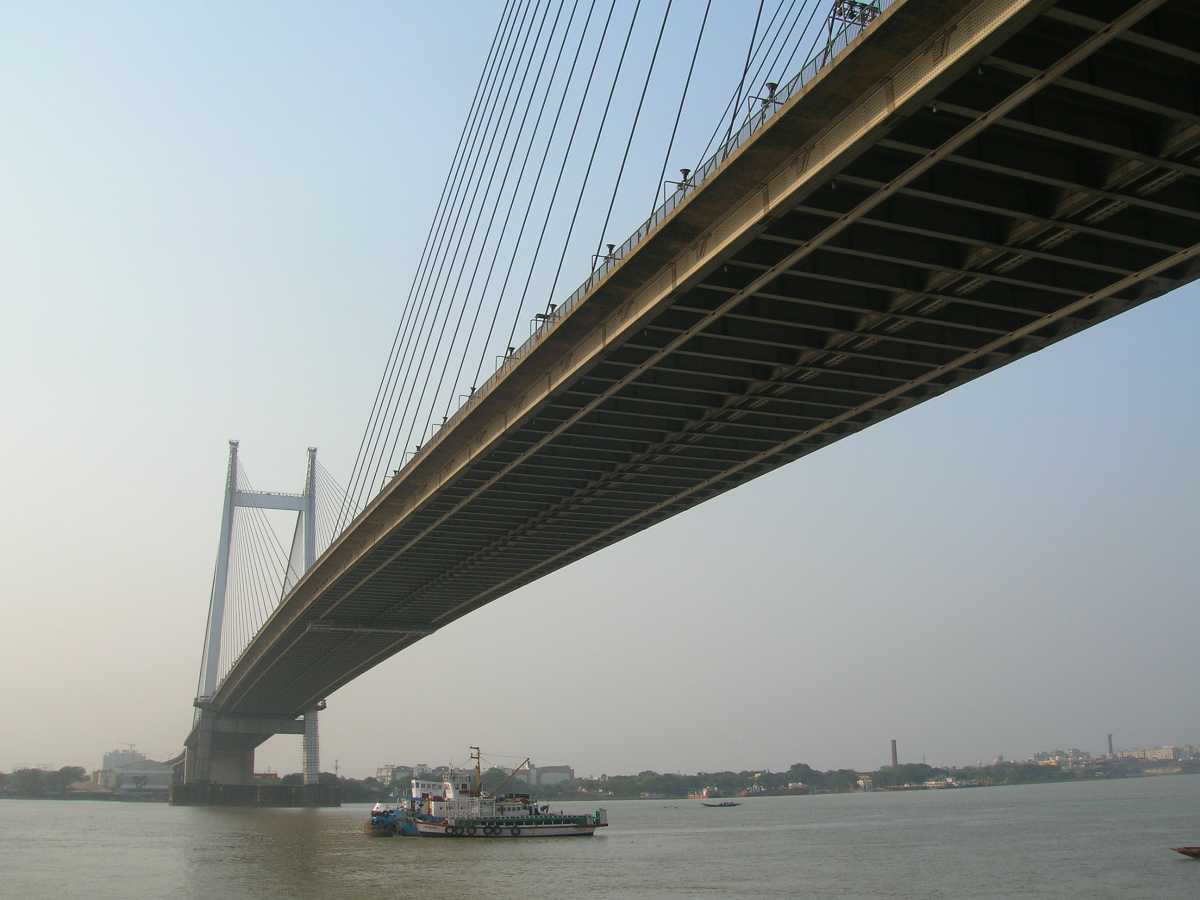Vidyasagar Setu
Vidyasagar Setu, Howrah Overview
Vidyasagar Setu is the longest cable-stayed bridge in India built over the Hooghly River in West Bengal. It is also popularly known as the Second Hooghly Bridge, as it was the second bridge to be built across this river. It was named after Pandit Ishwar Chandra Vidyasagar who was an educationist reformer and a key contributor to the Bengal Renaissance. The bridge carries the Kona Expressway (or NH 117) and connects Howrah to Kolkata. Vidyasagar Setu was built to decrease the congestion on Howrah Bridge that is located about 8 kilometres away.
Read More on Vidyasagar Setu
Interesting Facts of Vidyasagar Setu
- The Second Hooghly bridge has a capacity of 85,000 vehicles.
- Close to 30,000 vehicles ply over the Vidyasagar Setu on a daily basis.
- The Vidyasagar Setu took more than 22 years to get completed.
- It is the longest cable-stayed bridge in India.
- The Vidyasagar Setu bridge is free for bicycles. (No toll)
History of Vidyasagar Setu
The Architecture of Vidyasagar Setu

The bridge has 121 steel cables arranged in a fan-type structure about 418 feet high and 115 feet wide. It has three lanes for heading in each direction and wide footpaths on both sides. Additionally, the bridge has vital components such as gas service support structures, lightning arresters, lifts in the pylons, crash barriers and a maintenance gantry.
Over the years of its operation, several accidents have occurred on Vidyasagar Setu resulting in severe traffic congestion at the bridge’s entry. Some of these situations have even led to the closure of the bridge for several hours. To avoid such situations in the future and to relieve the traffic congestion that might occur at the entry of the bridge, the Hooghly River Bridge Commission (HRBC) is planning to build exit and entry ramps. These ramps will enable the easy flow of traffic. Other plans for this second Hooghly bridge include installing LED lamps across it. An electronic toll collection system was also scheduled to help with the traffic flow across the bridge.
